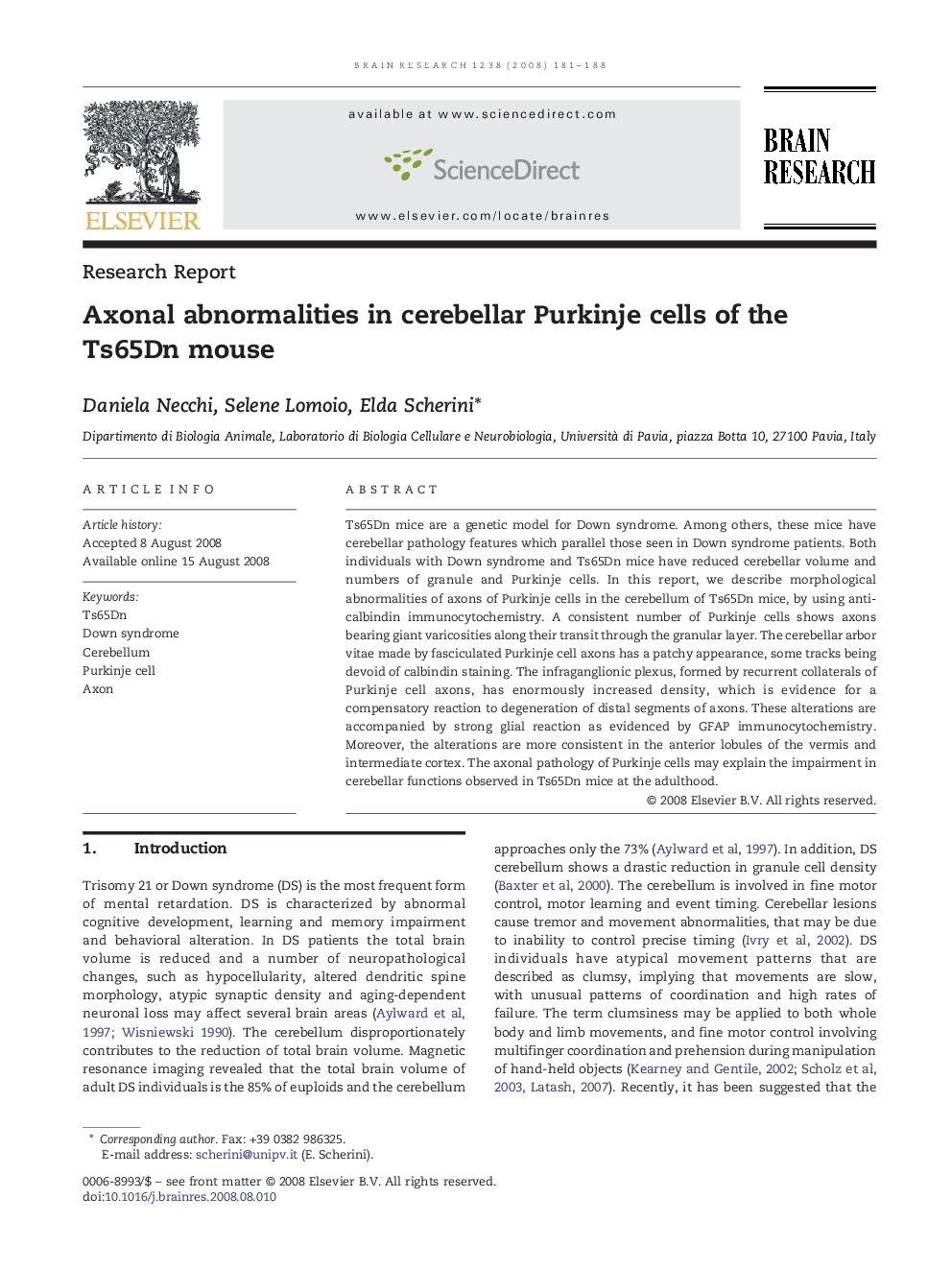| Article ID | Journal | Published Year | Pages | File Type |
|---|---|---|---|---|
| 4329213 | Brain Research | 2008 | 8 Pages |
Abstract
Ts65Dn mice are a genetic model for Down syndrome. Among others, these mice have cerebellar pathology features which parallel those seen in Down syndrome patients. Both individuals with Down syndrome and Ts65Dn mice have reduced cerebellar volume and numbers of granule and Purkinje cells. In this report, we describe morphological abnormalities of axons of Purkinje cells in the cerebellum of Ts65Dn mice, by using anti-calbindin immunocytochemistry. A consistent number of Purkinje cells shows axons bearing giant varicosities along their transit through the granular layer. The cerebellar arbor vitae made by fasciculated Purkinje cell axons has a patchy appearance, some tracks being devoid of calbindin staining. The infraganglionic plexus, formed by recurrent collaterals of Purkinje cell axons, has enormously increased density, which is evidence for a compensatory reaction to degeneration of distal segments of axons. These alterations are accompanied by strong glial reaction as evidenced by GFAP immunocytochemistry. Moreover, the alterations are more consistent in the anterior lobules of the vermis and intermediate cortex. The axonal pathology of Purkinje cells may explain the impairment in cerebellar functions observed in Ts65Dn mice at the adulthood.
Related Topics
Life Sciences
Neuroscience
Neuroscience (General)
Authors
Daniela Necchi, Selene Lomoio, Elda Scherini,
